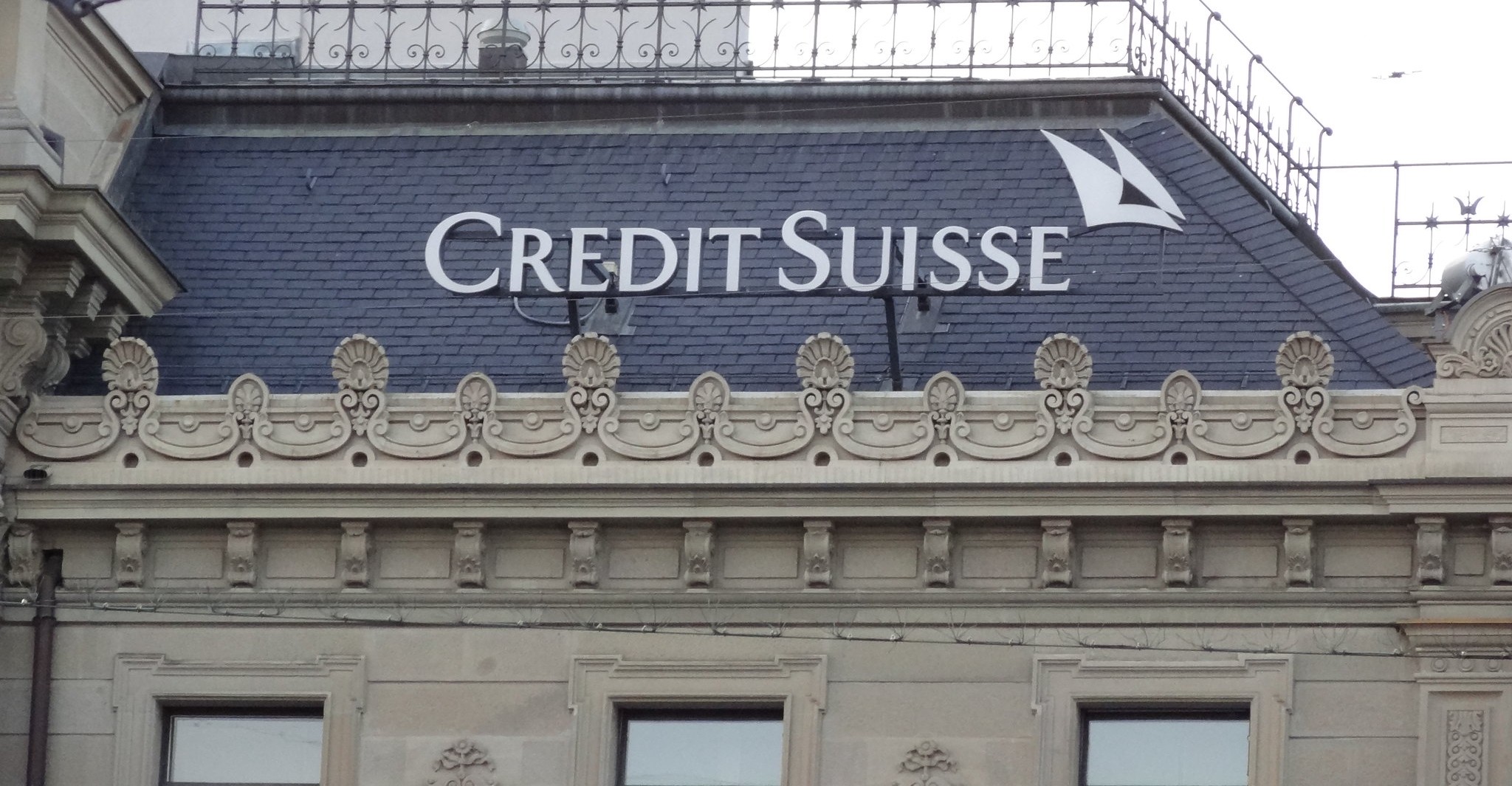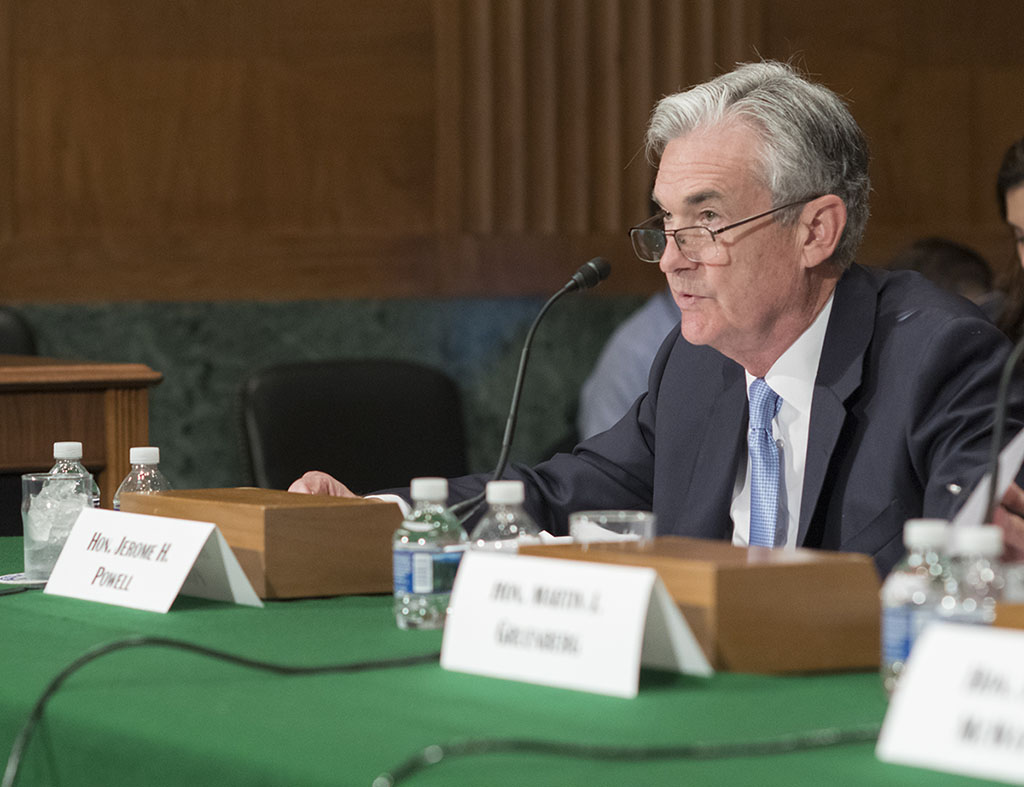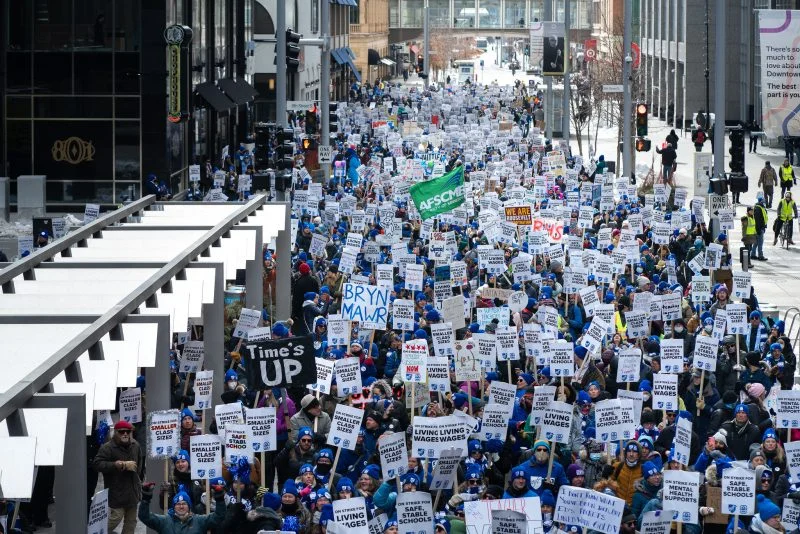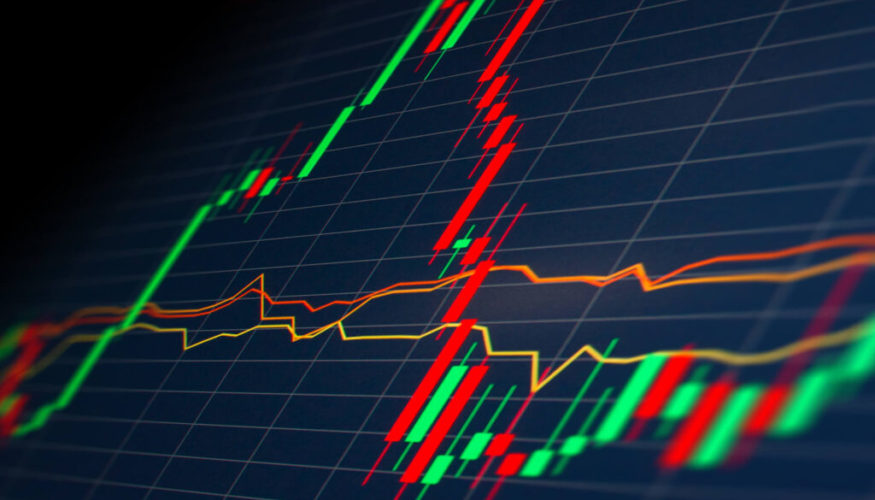The situation has gone from bad to worse for the world’s financial markets. After three bank collapses in the US and one in Switzerland, the markets are looking for the next weak link.
This morning, Deutsche Bank was in the crosshairs, with a 13% fall in the share price, and others are close behind. It shows that, 15 years after the ‘credit crunch’, nothing has been resolved.
Another day, another crisis
Last week, both Silicon Valley Bank and Signature Bank collapsed, after their largely business depositors withdrew tens of billions of dollars from their bank accounts, fearing they would lose their funds – or, at the very least, access to the funds for an extended period of time.
The banks were beginning to fall like dominos, starting with the weakest. Only by guaranteeing all deposits could the Federal Regulator and the Federal Reserve stem the tide.
Even that was insufficient, and on Thursday evening, the big banks handed over $30 billion to First Republic, which looked like it was about to become the next victim.
At the same time, Credit Suisse, the Swiss banking giant, has collapsed into its bigger rival UBS.
Unlike its smaller US counterparts, Credit Suisse is a global bank, and a collapse there would have global ramifications. It is classified by regulators as one of 30 “global systemically important banks”. An implosion of Credit Suisse would have spelt disaster for the world financial system.
The Swiss central bank offered Credit Suisse a $54 billion guarantee to keep it afloat. But even that wasn’t enough. In the end, the bank had to be bailed out by a combination of government money and a merger with UBS.
 Unlike its smaller US counterparts, Credit Suisse is a global bank, and a collapse there would have global ramifications / Image: investing academy pro Flickr
Unlike its smaller US counterparts, Credit Suisse is a global bank, and a collapse there would have global ramifications / Image: investing academy pro Flickr
This latest turbulence reveals the continued instability of world capitalism. This is now the third or fourth serious financial crisis since 2008. There was a crisis in the government bond markets in 2011 to 2012; the COVID-19 crisis; the British government bond crisis in September; and now another commercial bank crisis.
The cheap money served up to the financial markets by quantitative easing, particularly since 2011, has sheltered the financial system from serious difficulties. But that has now reached its limits.
Pressure of interest rates
Rising inflation forced central banks to change course. From 0% interest rates and money printing, they rapidly had to start raising interest rates. This was the fastest pace of rate rises since the early 1980s. Jerome Powell, chair of the Federal Reserve, declared in August last year:
“We are taking forceful and rapid steps to moderate demand so that it comes into better alignment with supply, and to keep inflation expectations anchored. We will keep at it until we are confident the job is done.”
He added in October: “We have got to get inflation behind us. I wish there were a painless way to do that. There isn’t.”
Now the pain is starting to show. The tech sector has started laying people off, and the construction sector is also starting to feel the pain.
 Rising inflation forced central banks to change course. From 0% interest rates and money printing, they rapidly had to start raising interest rates / Image: Federalreserve, Flickr
Rising inflation forced central banks to change course. From 0% interest rates and money printing, they rapidly had to start raising interest rates / Image: Federalreserve, Flickr
The banks, particularly SVB, were caught out by sitting on a large amount of government bonds on their balance sheets. This might have seemed like a very safe bet a year or two ago. But these ‘very safe’ assets are not so safe anymore.
When SVB needed to sell them to cover the deposits that were being withdrawn, they had to take a big loss. Logically, a 10-year US government bond at 1% interest would not attract a lot of investors, when you can get the same bonds at 4% interest on the open market.
As long as you can keep the bonds until maturity (10, 20, 30 years), then there’s no problem. However, if you have to sell them in present conditions, then you must sell the bonds at a loss. Such losses threatened to make SVB insolvent, which prompted them to launch their ill-fated stock offer.
Safety becomes unsafe
One of the reasons why banks are so heavily invested in the bond market is to remain compliant with new regulations brought in after the crisis of 2008. The idea was that, by forcing the banks to maintain a high level of ‘safe’ assets, they could ensure that there wouldn’t be a repeat of 2008.
Of course, that all depends on what is considered safe. And what was a safe investment two years ago would be a risky proposition today. As Greg Ip put it in the Wall Street Journal: “The problem is that financiers tend to double down on a safe strategy until it becomes unsafe.” That is, too much safety becomes unsafe.
Regardless, this strategy forced banks to buy a lot of government bonds, which were seen as one of the safest assets. The banks increased their exposure to these bonds from 12% to 20%. But what was once a safe asset has now become a very problematic one.
It has echoes of the British government bond crisis in September 2022, when pension funds, under the advice of pension regulators, had invested heavily in financial instruments that effectively bet on the interest rate for UK bonds remaining low. This too was considered a safe bet.
When the bond rate rose rapidly, however, following then-prime minister Liz Truss’ economic announcements, the pension funds had to rapidly sell these instruments in order to remain compliant (the bets had stopped being ‘safe’ assets). And as they did so, this put even more pressure on British bond markets, causing bond rates to rise and forcing pension funds to sell. Thus, a vicious circle was created.
The banks are fine, as long as they can hold onto the bonds until they mature. But if they have to sell them early, and at a fast pace, then they very quickly end up in a world of trouble. This is what happened to SVB, Credit Suisse, and Signature in the past two weeks.
Too big to fail
These banks might have been the weakest link, but they are not alone. Martin Wolf points out that Federal Reserve figures show that the difference between assets and liabilities for US banks was $2.2 trillion on paper. But it has been estimated that $2tn of this would be wiped out if it had to be sold today. This would effectively put much of the banking sector in insolvency, as their assets would be worth less than their liabilities.
“A general run would force these losses into the open and wipe out the equity,” Wolf concludes. “To prevent this, the authorities may have to protect all deposits.”
This is precisely also how the Federal Reserve has acted. And other central banks would follow suit if needed.
By having the central bank guaranteeing every bank, they are generalising the crisis. Their policies are turning the crisis of each bank into the crisis of the system as a whole. They are nationalising the risks, whilst of course privatising the profits.
The crisis of the banking system therefore becomes a crisis of the central bank. And this means a crisis of the whole capitalist system.
The entire banking sector has become far more monopolised in the past three decades. This means most of the banking industry has ended up in the category of ‘too big to fail’.
Back in 1992, the top three banks controlled 10% of the US banking sector. Now that is 40%. In other countries, the degree of monopolisation is higher, with the top three banks controlling between 60-80% of the market.
The consequences of a bank failure – not just for the bank itself, but for the wider economy – are therefore catastrophic.
The state to the rescue
This also means that regulators and governments, time and time again, have to bail out the banks. The banks have the economy in a chokehold, as we could see with SVB. Companies that employed a quarter of a million workers were threatened with not being able to pay their bills and payroll. And SVB wasn’t even considered big enough to be of ‘systemic’ significance.
As Wolf puts it: “Banking stands revealed as a part of the state masquerading as part of the private sector.”
Bourgeois commentators like to talk about ‘moral hazard’ when referring to bailouts – as if there is anything ‘moral’ about capitalism. This is really a way of saying that those capitalists that do not pursue profitable strategies in the long term, and that take excessive risks, ought to fail. But this is not taking place.
They cannot allow the kind of devastation that is necessary to restore equilibrium of the capitalist economy. In the 1930s, more than one third of all US banking institutions collapsed. And depositors lost something like $150 billion in today’s money.
A crisis is supposed to force companies and banks to close, in order to make room for the profitable ones.
In the absurd, anarchic logic of the capitalist economy, mass unemployment and mass misery for the working class are necessary to create a new ‘equilibrium’ in the economy. The bourgeois economist Joseph Schumpeter euphemistically referred to this as ‘creative destruction’.
But this is not happening. Governments and central banks are constantly keeping the economy on life support. This has given rise to the so-called ‘zombie’ companies: businesses that are losing money, and which really should go bankrupt, but which have been kept alive until now by cheap credit. Credit Suisse was really a zombie bank, also kept alive by cheap credit.
With the policy of interest rate hikes, the ruling class were supposed to bring this to an end. But now they have pulled back. As soon as there was a risk of serious ‘pain’ being inflicted on the economy, central bankers, despite their very strong words previously, were suddenly not prepared to deal with the consequences of their policy.
What this describes is a situation where the free market no longer functions. The productive forces have outgrown the narrow limits of private property. The monopolisation of the banks; their interconnectedness and interdependence on each other: all of this describes precisely monopoly capitalism.
The market can not handle this. And the state stepping in is a tacit admission of the bankruptcy of the capitalist system – and of how it has outlived its historic role.
Inflation not going away
The new financing initiative of the Federal Reserve opens up another chapter of free or cheap credit. And their latest interest rate rise, brought in this week, which was meant to be as high as 0.5 percentage points, was reduced to 0.25 points.
 US workers are already suffering. Already, communism has become popular among the youth, and the idea of socialism has support in society at large / Image: Chad Davis, Flickr
US workers are already suffering. Already, communism has become popular among the youth, and the idea of socialism has support in society at large / Image: Chad Davis, Flickr
Furthermore, the Fed has now changed its language. From talking about “ongoing” rate rises, they now say that “some additional” rises might be needed.
Why is this? It’s not very hard to work out. Biden and Powell took one look at the 250,000 jobs that were in jeopardy; they took one look at the potential of a 1930s-style banking collapse, with corresponding runs on the banks, and they thought: not on our watch.
US workers are already suffering, and this would only add even further pressures. Already, communism has become popular among the youth, and the idea of socialism has support in society at large. The centre ground has collapsed and the ruling class have lost control of many of their political representatives. It is no wonder that they blinked.
At the same time, there is a constant pressure on the supply side of the inflation equation.
Powell’s plan was, by means of interest rate rises, to make workers and companies poorer, and therefore to reduce demand in the economy. But he had no plan to deal with issues of supply.
That is, the ruling class has no plan to deal with spiralling costs for raw materials, energy, transport, and so on. Central bankers can do nothing to deal with protectionism and massive military expenditure. All of these exacerbate inflationary pressures, and cannot be tackled without inflicting pain in one part of the economy or another.
As American bourgeois economist Kenneth Rogoff argues in the FT, referring to the cost of defence, green transition and “populism”:
“What this means is that even after inflation abates, central banks may need to keep the general level of interest rates higher over the next decade than they did in the last one, just to keep inflation stable.”
Rogoff adds: “Things are going to get harder for the Fed. The trade-offs it faces next week [referring to this week’s rate rise decision] might only be the start.”
If the Federal Reserve is now forced to slow down the pace of rate increases, in order to keep the banking sector afloat, then there will be little stopping inflation from taking off. A warning sign is UK inflation, which just rose sharply last month.
Adding fuel to the fire
Of course, some companies are making an absolute killing in this situation.
According to the British trade union Unite: “Average profit margin of firms in the FTSE 350 jumped 89% in the first half of 2022 compared with the first half of 2019.” The oil giant BP doubled its profits to £23bn. Another major winner is agricultural multinationals, who saw their profits rise over 200%.
This has prompted left-wing economists to call for action against multinationals. But the only measure that would work is nationalisation. Only by producing for social needs, not private profit, could these monopolies be made to forgo their profits for the benefit of humanity. Instead, these bumper profits become yet another insult to workers, who are struggling to feed and shelter themselves and their loved ones.
It is noticeable how both the Swiss and the US governments are at pains to point out how banks and investors will have to pay for the latest wave of bailouts. They clearly fear the anger that could be provoked by handing over another blank cheque to the bankers.
But no one seriously believes these promises. Sure, if the damage can be limited to a few small banks, that might be possible. But the whole situation is putting more and more pressure on the banks. And it is just a matter of time before the next bank falls. At the same time, politicians will find it increasingly difficult to hide the costs through accounting tricks.
This situation is having tremendous consequences for the class struggle. Persistent inflation will force even more strikes and struggles to defend wages and working conditions. There are only so many rotten deals that trade union leaders can sign before they face a revolt from below. At the moment, even the best deals typically equate to a 2 or 3 percent pay cut in real terms. Most come in at around a 5-6 percent real-terms cut.
 Already, last year, inflation provoked a revolutionary movement in Sri Lanka / Image: Surekha Samarasena, Wikimedia Commons
Already, last year, inflation provoked a revolutionary movement in Sri Lanka / Image: Surekha Samarasena, Wikimedia Commons
How long can workers accept this? This is already the second year of double digit inflation in the advanced capitalist countries. In the ‘developing’ world, the situation is even worse.
Clearly, the hope of the bourgeois was to bring inflation to a swift end, possibly combined with some kind of deal over Ukraine. But the war in Ukraine rumbles on. And the stress on the banking system means that further interest rate increases could easily trigger another 2008-style banking crisis. This time, of course, after 15 years of austerity, attacks, and instability, the conditions would be completely different – and the impact would be far more severe.
Undoubtedly, the ruling class will present the bill to the working class, in the form of more real-terms pay cuts, mass unemployment, cuts to social spending, and tax rises.
However they get out of the present crisis, it will create even more misery for the working class, provoking more waves of class struggle. Already, last year, inflation provoked a revolutionary movement in Sri Lanka. Where will the next take place? No one knows. But similar conditions are being prepared everywhere.

